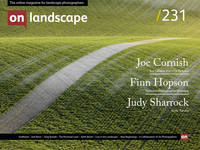Jack Brinn chooses one of his favourite images

Jack Brinn
Jack Brinn is a retired medical school professor and serious hobbyist photographer, an interest for most of his adult life. He has roots in North Carolina as well as in Colorado and Wyoming, and his photographic interests are diverse. Some of his present skill set can be attributed to his professional roots in electron microscopy wherein composition, contrast and detail are as critical as they are with any other camera system. He currently resides in central North Carolina with his wife of 55+ years.
When approached about providing a submission to the end frame series, my thoughts went to artists rather than images. While there are numerous photographic artists who inspire me and whom I follow both as image makers and authors on this forum and others, my winnowing process was a short one. It led me to “Trees From a Train No. 109” by Cole Thompson because it says so much about Cole. I’ll go back a few years in order to make my point.
My first encounter with Cole Thompson was at his presentation to the Loveland Photographic Society which I attended soon after I retired. At that point, my photography knowledge was wanting, and I knew nothing about this photographer. While I was impressed with his images, his presentation left me perplexed. No Photoshop layers? Dodge and burn the image? Remove sensor spots in Photoshop instead of ACR? Photographic celibacy? Vision? Especially vision! He was an enigma for me, a relative novice. However, with time, a coffee shop meeting, visits to his studio and digital dialogues my perspective changed, and I came to know and have great respect for him and his art. His vision concept was a bit more difficult for me to grasp, perhaps because I needed to experience it in order to grasp it.
Cole’s images are nearly all black and white; however, he is not a dark minimalist. He doesn’t photograph the iconic places, nor does he follow in someone else’s photographic footsteps. His portfolios have little if any subject matter connectivity and his simple six-step image processing is well-documented in YouTube videos. Long exposure is a favourite technique, and he usually travels to photograph – without extensive preparative study of his destination.

